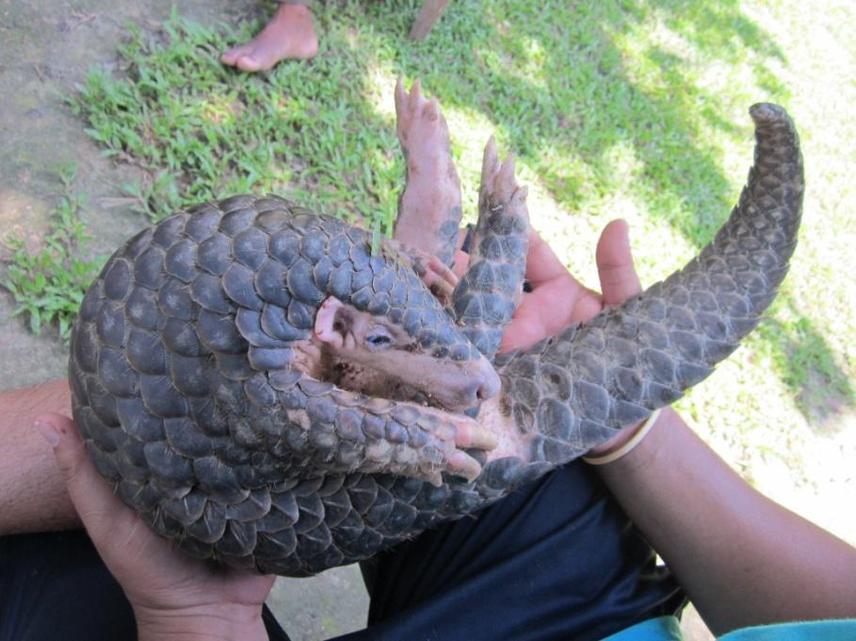Kuladip Sarma
The project aims to look at the occupancy of Chinese Pangolin in different habitat types in Manas Biosphere Reserve and to understand more about precise nature and magnitude of threats to pangolins in the reserve.

©Tapu Nath.
Manis pentadactyla is known to occur in the Himalayan foothills in Nepal, Bhutan and northern India, possibly Bangladesh, across Myanmar to northern Indo-China, and through southern China (south of the Chaiangjiang) to Hainan and Taiwan (IUCN 1996; WCMC et. al. 1999). Recently, due to high rate decline throughout its range, the species has been categorised as critically endangered in IUCN Read List. However, the occurrence and distribution range of the species in India is yet to be explored systematically. Although the species has been included in the Schedule I of the Indian Wildlife (Protection) Act, 1972; also included under Appendix II of CITES with zero export quota for commercial trade, there is urgent need of systematic status surveys for the species in various pockets of India. The species has been experiencing major anthropogenic threats in terms of local trade and hunting especially in the western part of the state of Assam, India. These areas are along the southern boundary of the Manas Biosphere Reserve. Hence, it is necessary to know the distribution of the pangolin, and its status and threats in the Manas Biosphere Reserve. This will help develop strategies to address the growing threats to the species.
The above scenario depicts the need for better understanding of the habitat of the species, which will be extremely useful in the assessment of its status and to design appropriate conservation measures. In the proposed survey, I will investigate the status and distribution of Manis pentadactyla in Manas Biosphere Reserve. Also, I aim to look at the threats faced by the species in terms of trade and hunting at the local scale. These aspects will help provide better understanding of the distributional patterns of the species, as well as to identify potential habitat that can be monitored for protection. This will help prioritize important areas for the species and channel management initiatives. Moreover, the local Bodo tribes living around the reserve will be involved in the interviews and discussions, which will help in creating greater awareness about the species and why it needs to be conserved.